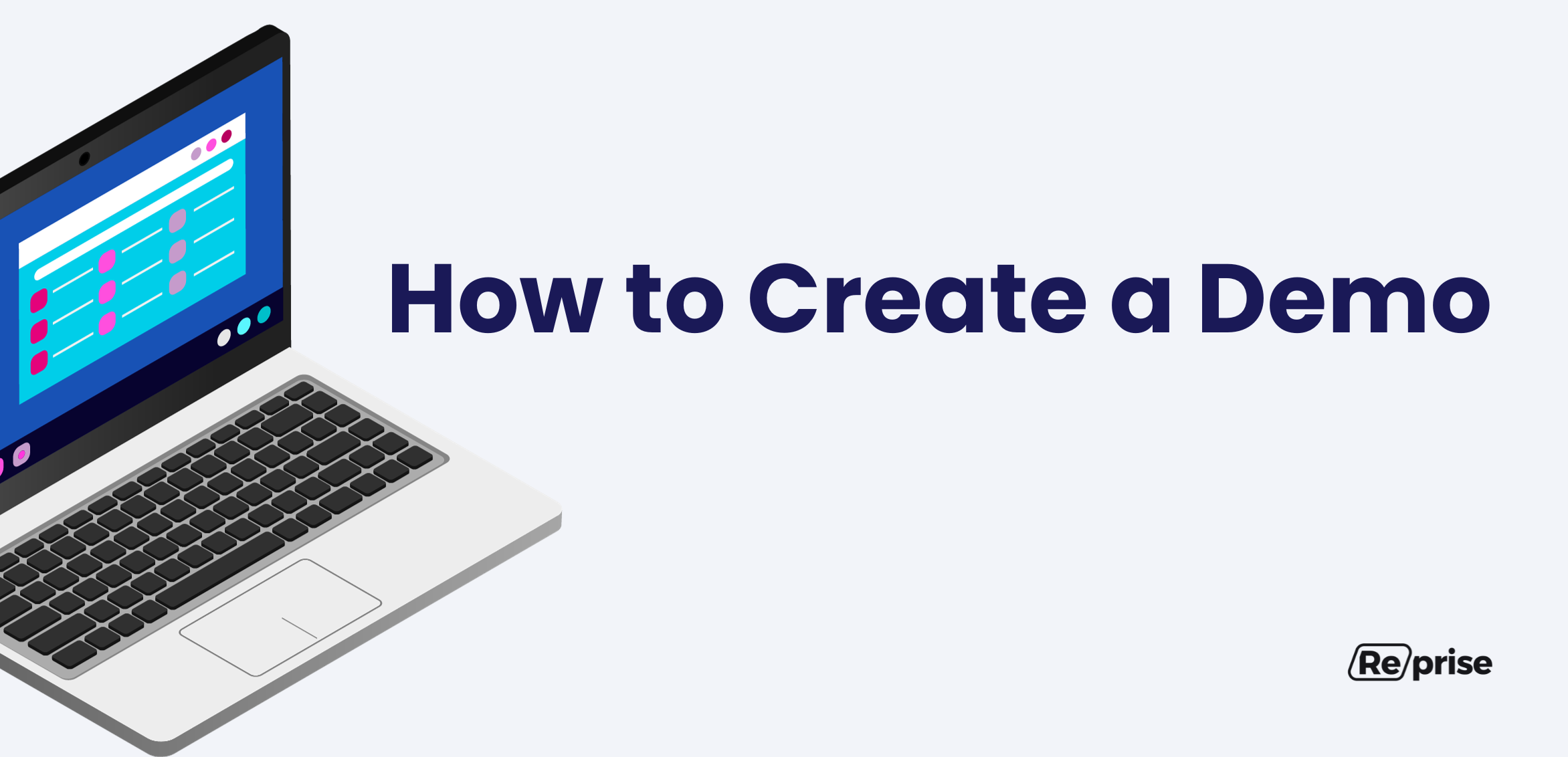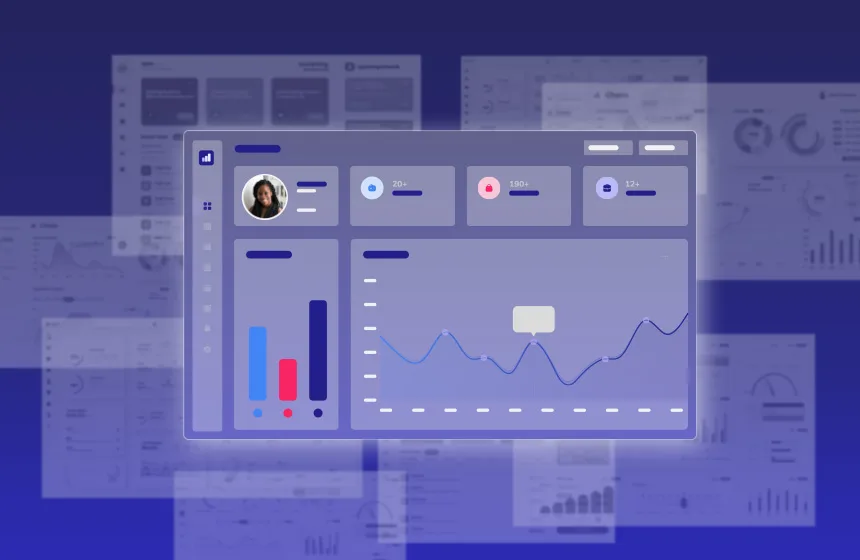Accelerate deals and increase win rates with the leading enterprise AI demo platform.
How to Create a Demo That Actually Converts

September 24, 2025
Table of Contents
Today’s enterprise software buyer journeys are complex. Many buyers want to self-evaluate products before engaging with sales reps, and will look to interactive demos on a company’s website to discover product value quickly. Once they’re past the awareness phase, 80% of B2B companies have buying committees that influence software purchasing decisions, with as many as 22 distinct roles involved in the process.
Both interactive demos and live demos are powerful tools you can use throughout the enterprise sales cycle, helping your go-to-market (GTM) team accelerate sales cycles and close deals. In this extensive guide, we will take you on a journey through the process of crafting an interactive demo that not only captures your audience’s attention, but also supports committee decision-making and ultimately drives sales. From grasping the fundamentals to harnessing the power of advanced software like Reprise, you’ll find every detail you need to create a winning demo.
What is an Interactive Demo?
Before we dive into the details of creating an interactive demo, let’s define what an interactive demo is. At its core, an interactive demo is a dynamic and engaging presentation that empowers users to actively interact with a product or service. Rather than a product demo video involving static recordings, images and text, an interactive demo provides potential users with a way to explore features and experience the product or service in real-time.
How to Create a Demo in 5 Steps
Now that we’ve explored the many advantages of interactive demos, it’s time to roll up our sleeves and show you how to create one. Before we get into the step-by-step guide below, it’s important to emphasize that a demo creation platform can empower any GTM team member to build an interactive demo with little to no code or technical involvement. Doing it on your own can be costly and consume valuable engineering resources. With that in mind, let’s dive in.
Step 1: Plan Your Demo
The foundation of a successful interactive demo lies in meticulous planning. Begin by defining your objectives, identifying your target audience, and crystallizing your key messages. Determine which features or aspects of your product deserve to be highlighted up front. Think about the user journey and envision the story you want to tell. You may find that you need different interactive demos to serve a variety of personas or user pain points.
Pitfalls to Avoid: Neglecting the planning phase can lead to a disjointed demo that fails to convert. Ensure you have a crystal-clear plan in place that serves as the blueprint for your interactive demo.
Step 2: Prepare Your Story for the Demo
Your story is the narrative backbone of your demo. It should seamlessly guide the presenter or narrator through the most critical parts of the demo, ensuring a smooth and coherent presentation. Craft an outline for your demo that meshes well with your predetermined objectives and the anticipated user journey.
Pitfalls to Avoid: Overburdening the narrative with excessive technical jargon or too much information can overwhelm users. The key here is a laser-like focus on the most salient points that demonstrate value, having a narrative that the demo complements.
Step 3: Create a Prototype
Before creating your full-fledged interactive demo, many teams construct a prototype or wireframe. This representation serves as your canvas, allowing you to visualize the user experience and discover potential points of friction early in the process. The beauty of prototyping is that it can be accomplished using an array of user-friendly tools, often without requiring extensive coding expertise.
Pitfalls to Avoid: Rushing through the prototyping phase can lead to costly revisions further down the road. Be sure to dedicate sufficient time to iterate and refine your prototype.
Step 4: Capture Your Demo
With your plan in place and your prototype providing visual guidance, it’s time to create your interactive demo. Using a demo creation platform with screen capture capabilities makes it simple to create and edit an interactive product tour. Ensure that the narration or presentation is clear, engaging, and aligns well with your previously crafted script.
Pitfalls to Avoid: Videos, gifs, and audio can be embedded into an interactive demo flow to point out key features. Investing in high-quality demo creation software can help you avoid some of the pitfalls of a DIY screen recording approach.
Step 5: Edit and Test Your Demo
The right editing can make a raw demo into a polished gem. Trim away any extraneous elements, guarantee a seamless flow, and meticulously comb for errors or imperfections. Once your interactive demo is in its optimal form, test it thoroughly to uncover and resolve any lurking glitches or issues.
Pitfalls to Avoid: Be methodical and thorough in your testing to guarantee a smooth and gratifying user experience. Ensure that any personally identifiable information or customer data is removed from the presentation — a process that can be made much simpler with demo editing capabilities.
How to Create a Demo with Reprise
Reprise is one of the most popular and user-friendly interactive demo creation platforms on the market. Using a platform like Reprise can streamline your demo creation, and help your team create reusable templates to speed up the customization process. Beyond interactive demos alone, customers use Reprise to create live demos to help accelerate the enterprise sales process.
Here’s a closer look at why companies choose Reprise.
Customization and Personalization
Reprise empowers users with the ability to customize and personalize demo pages without coding requirements. This means that you can tailor the interactive experience to suit individual users or specific segments, amplifying your demo’s engagement and relevance.
Product Tours
Using the Reprise platform, it’s easy to create interactive product tours and walkthrough guides for prospective customers. These guides and clickthrough demos bring users through the most pivotal aspects of your product. Rather than unleashing your prospect into a free trial environment, a walkthrough guide can ensure that you convey value quickly.
Analytics for Insights
Reprise doesn’t only help you create demos, it also equips you with robust analytical tools that deliver insights into your demo’s performance. Through these tools, you can track user interactions, pinpoint potential drop-off points, and collect data to optimize both your demo and broader GTM strategy. Reprise connects to your CRM and marketing system of record to track your demos as you would any other asset or prospect experience.
Enterprise-Ready Security
Reprise ensures that both your data and your customer data is protected, with enterprise-grade security features. The Reprise platform is SOC-2 Type 2 compliant, and follows a multi-layered demo security strategy including role-based access control (RBAC), anonymization and data privacy controls, and more.
How Can Interactive Demos Benefit Your Business?
Interactive demos are useful throughout the enterprise sales cycle for marketing, sales, and presales team members alike. Unlike a product video or live demo given by an AE or SE, an interactive demo can reach many prospective buyers via your website, marketing materials, leave-behinds and more, and allows your buyers to explore your product independently on their own terms.
Let’s explore how integrating interactive demos into your sales and marketing strategy can benefit your business.
1. Drive Traffic
At the top of the funnel, interactive demos can act as virtual lead magnets. Their engaging nature piques the curiosity of visitors, compelling them to spend more time exploring your website. In addition, this increased engagement can significantly enhance your website’s conversion rates. For example, demo creation platform Reprise users found a 60% uplift in average website interactions converted to leads when using interactive demos on their homepages or product pages.
2. Build Credibility
Rather than making site visitors wait for a live sales demo, presenting your product in an interactive and hands-on manner inherently builds credibility. This approach grants users a deeper understanding of your offering, fostering trust in your brand and ensuring that only the most qualified prospects reach your sales team. Users are more likely to trust what they can experience firsthand.
3. Highlight Key Features
Interactive demos can be more effective than tactics such as SaaS free trials because they accentuate the most valuable features of your product. They don’t require the prospect to load their own data or do extensive work to discover the genuine value you provide, ensuring that your unique selling points are not overlooked.
4. Increase Sales
Arguably the most substantial advantage of an interactive demo is the potential to boost sales. When users actively engage with an interactive demo and gain a comprehensive understanding of how your product can resolve their pain points or fulfill their needs, they are considerably more likely to continue through the sales funnel and convert into paying customers. Later in the sales cycle, interactive demos can be used as leave-behinds, empowering your champions to present your product’s value to committee decision-makers. In the same study cited above, Reprise users found a 50% increase in average conversion from lead to pipeline, along with a 50% decrease in average sales cycle.
5. Gather Insights
Interactive demos have another hidden benefit: they help you discover valuable data about your prospects. By analyzing user interactions within your software demos, you can extract invaluable insights into user behavior. These insights can, in turn, be utilized to refine both your sales and marketing strategies.
When done well, interactive demos serve as an invaluable resource for enterprise GTM teams. With the right steps in place, planning and executing an interactive demo can be easy, and ensure a seamless user experience.
Best Product Demo Examples
To bring inspiration to your demo creation efforts, let’s look at some of the most compelling product demo examples. These Reprise-powered demos have earned their stripes by virtue of their creativity, clarity, and overall effectiveness.
Hireology
HR platform provider Hireology saw an opportunity to modernize their sales motion. With Reprise product tours, Hireology prospects experience the product first-hand and go-to-market processes are more consistent and efficient. As a result, Hireology has seen opportunities involving product tours close 50% faster than those where product tours were not utilized.
Unbabel
Language operations provider Unbabel sells software that requires a nuanced, interconnected product experience in order to show its full potential. It was hard to demonstrate value to prospects without letting them test-drive the product. Using Reprise interactive demos, Unbabel created a library of specialized, in-depth product walkthroughs that guide prospects along a journey through Unbabel’s full platform and all of its interconnectivity.
Cloudera
As a provider of enterprise cloud services, Cloudera needed their product to be more accessible to their everyday prospect. By leveraging Reprise to build custom, guided demos, Cloudera was able to allow their prospects to see, feel, and experience their product on a wider scale than ever before. Using Reprise, the company experienced 75% lower total acquisition costs due to fewer demo environments running.
These examples show the diverse approaches you can consider when crafting your own interactive demo. Remember that the key lies in aligning your demo with your specific audience and overarching objectives.
How to Create a Demo FAQs
Let’s take a moment to address some frequently asked questions concerning the creation of interactive demos:
How long should a product demo be?
The ideal duration of a product demo hinges on several factors, including your target audience and the complexity of your product. As a general guideline, aim for a concise overview that can be completed within 3 to 5 minutes. For a more comprehensive tour, you can extend the duration to up to 15 minutes.
What should be included in a product demo?
A comprehensive product demo should encompass the following elements: An engaging introduction, an explanation of key features, clear delivery of your product’s benefits, and a compelling call to action. Ensure that your focus remains on problem-solving and highlighting the unique value your offering provides.
How much does it cost to make a product demo?
The cost of producing a product demo can vary considerably, based on a number of factors. These factors may include the complexity of your product, the software tools you use, and more.
Can interactive demos improve your sales?
Interactive demos can substantially enhance your sales numbers. By providing potential customers with a captivating and immersive way to see your product in action, rather than a recorded product demo video, you can effectively demonstrate its value, making them more inclined to purchase.
What tool is used to create live demos?
A demo platform like Reprise can help you create both live and interactive demos, with features including app capture, screen capture, and application cloning capabilities.
In conclusion, creating an interactive demo can engage your target audience, enhancing your brand’s credibility and driving sales. Armed with the insights provided in this guide and leveraging tools like Reprise, you are well-equipped to craft immersive demos that leave a lasting impression with potential customers.






